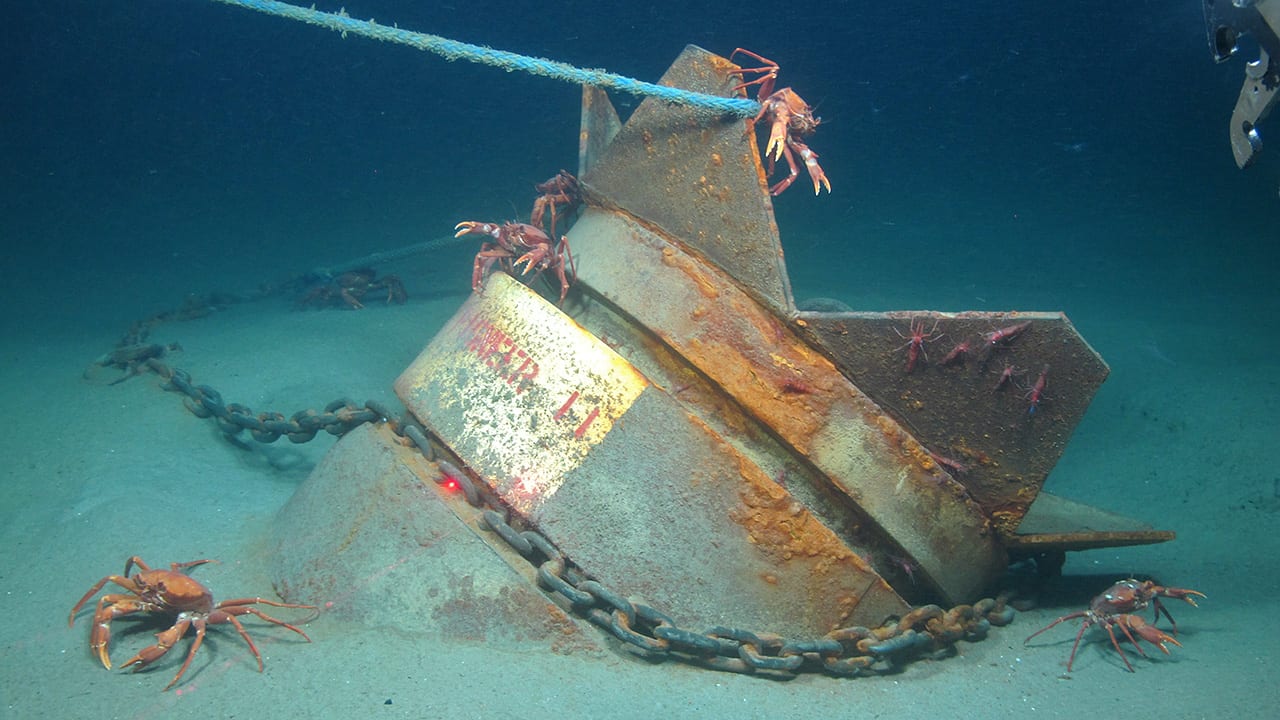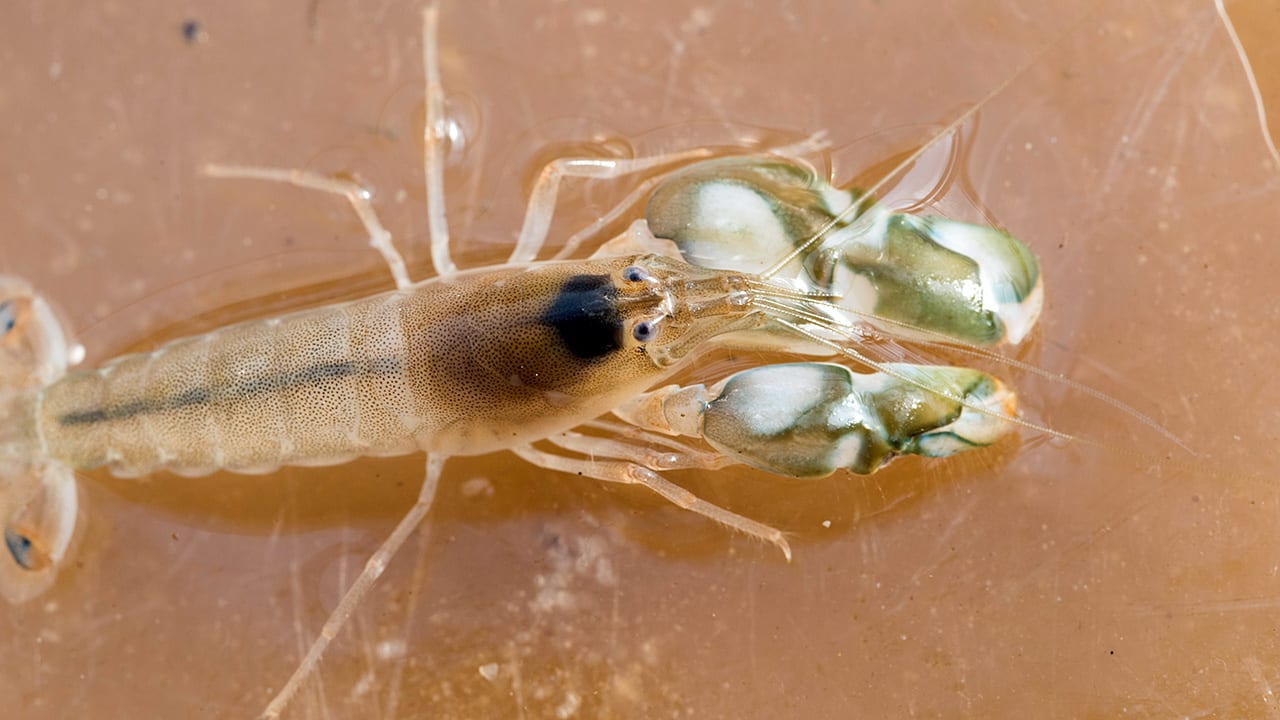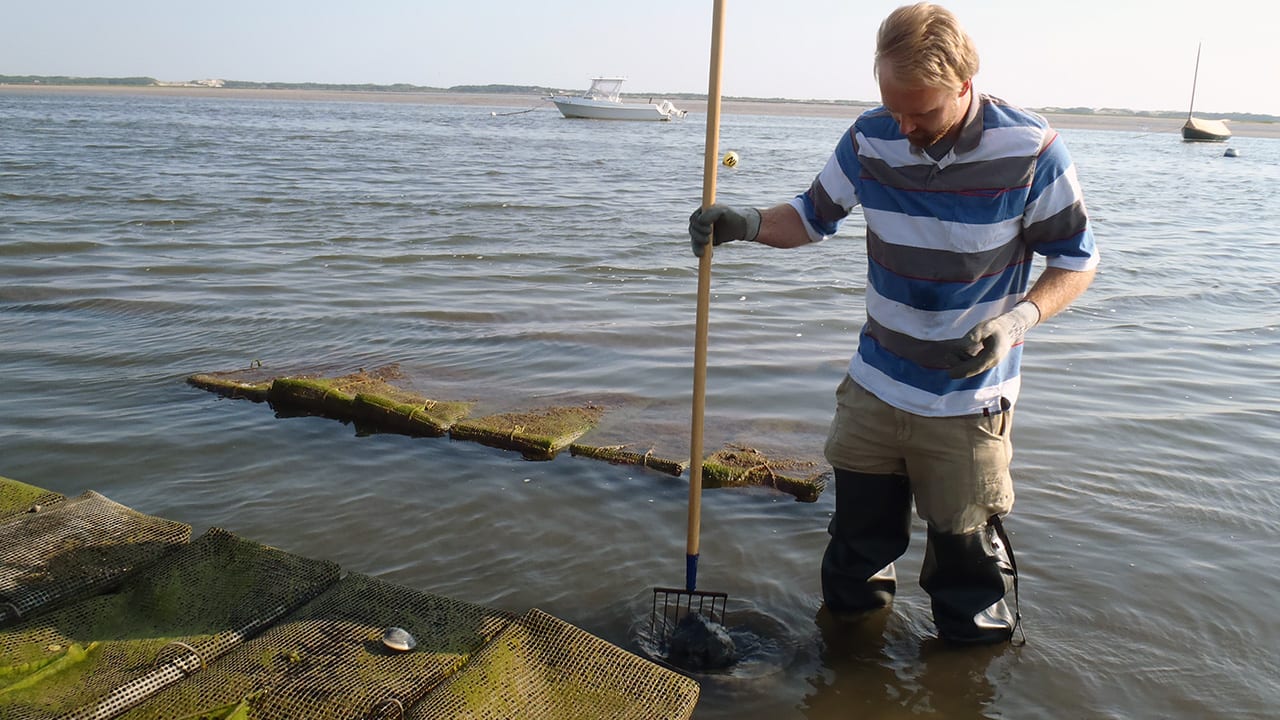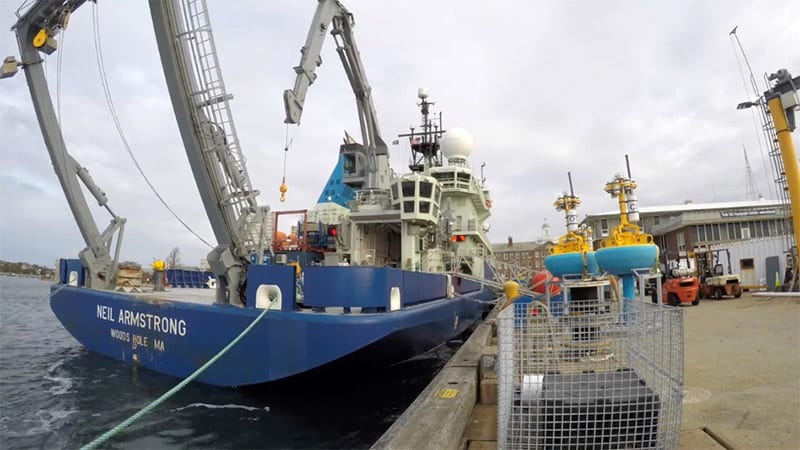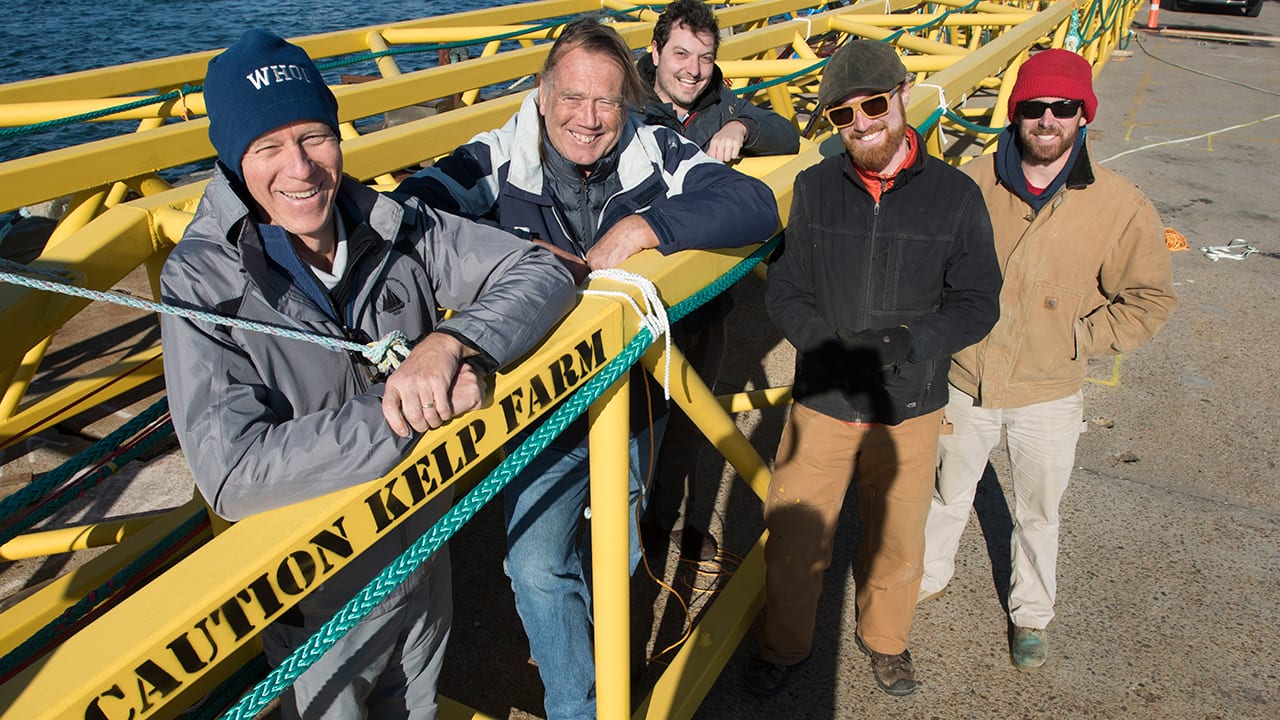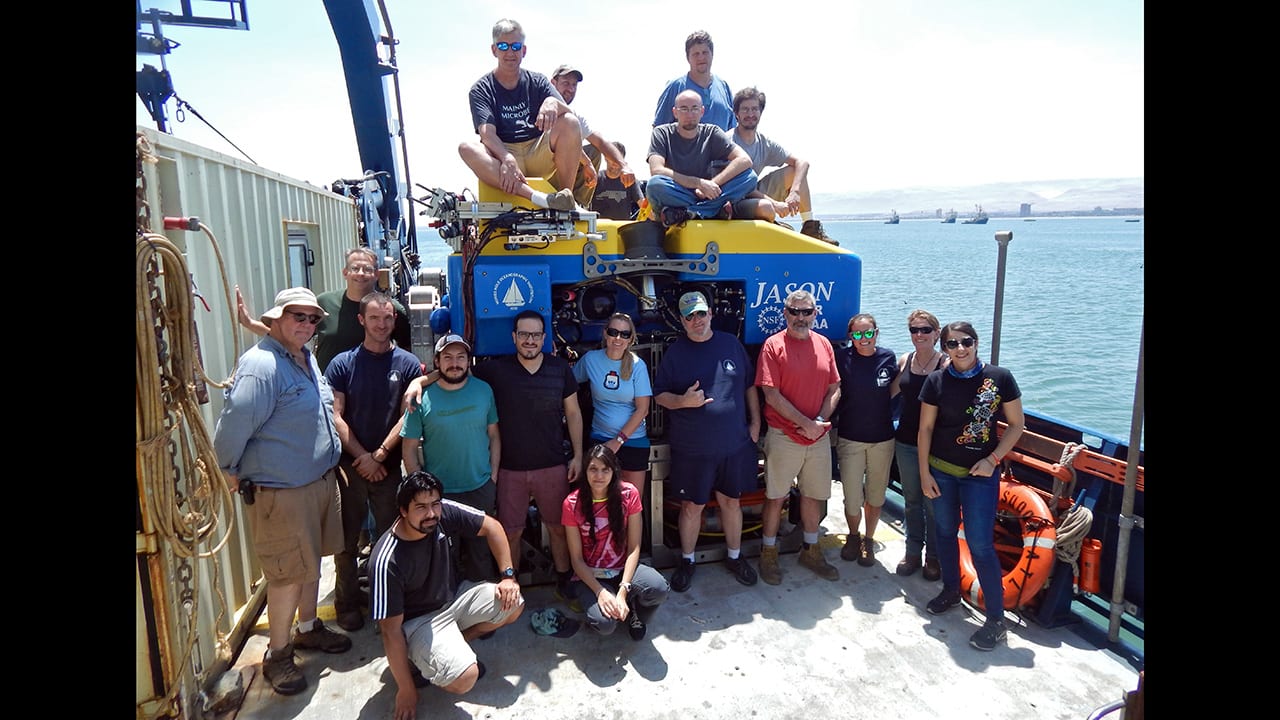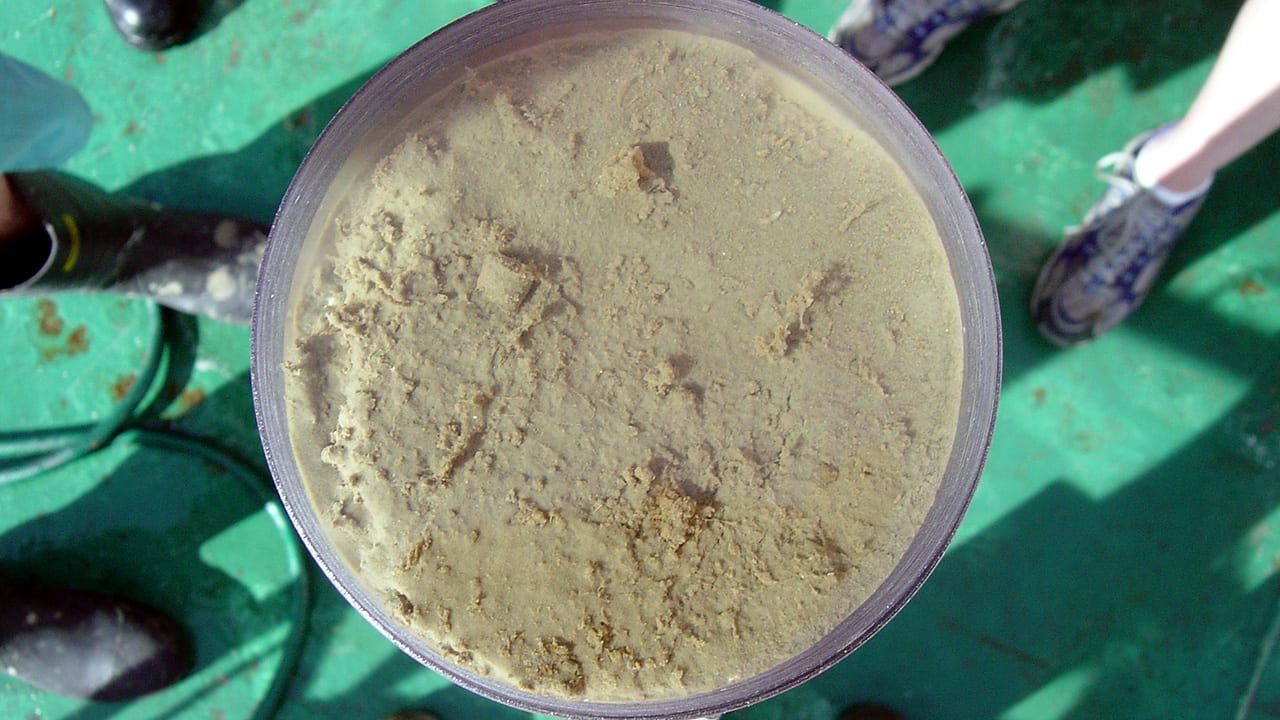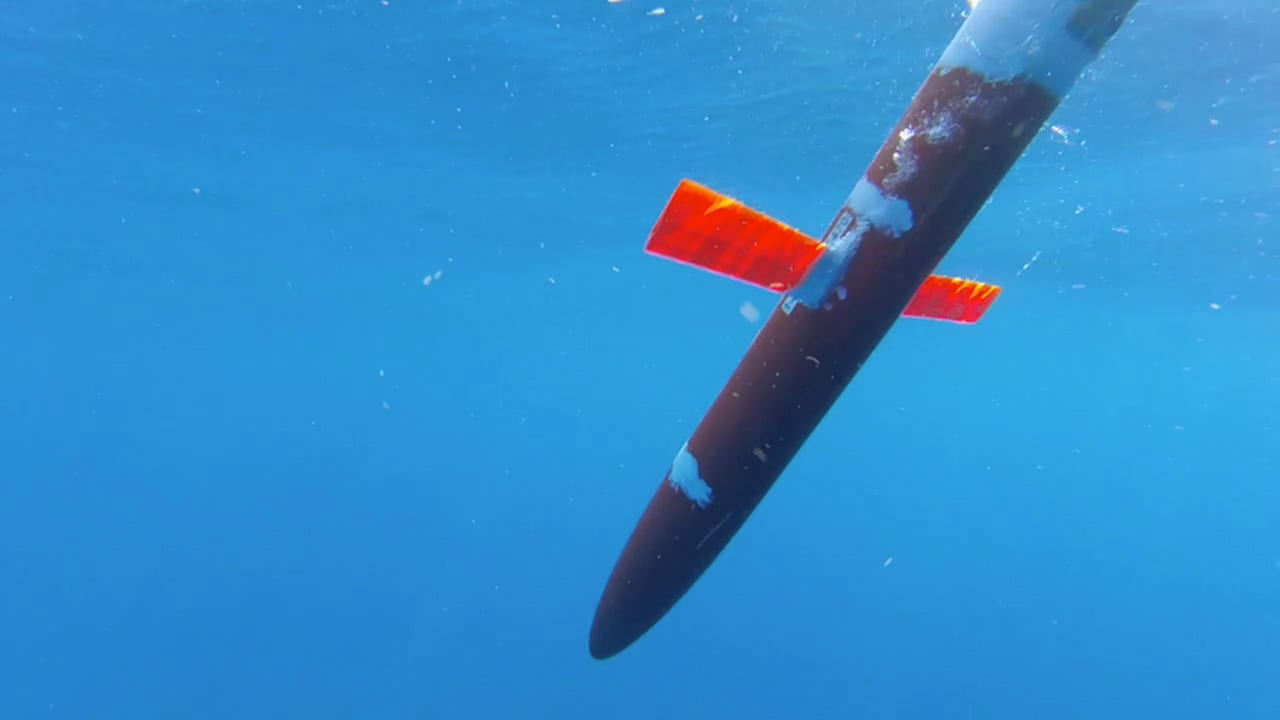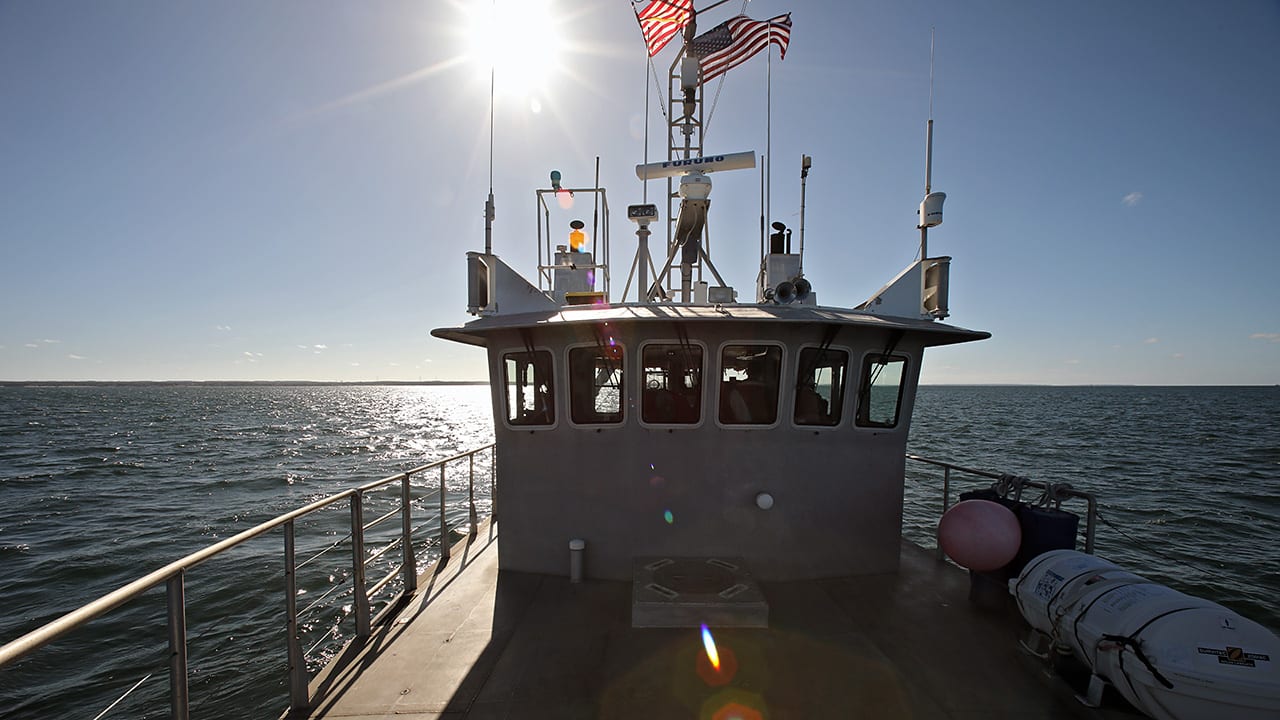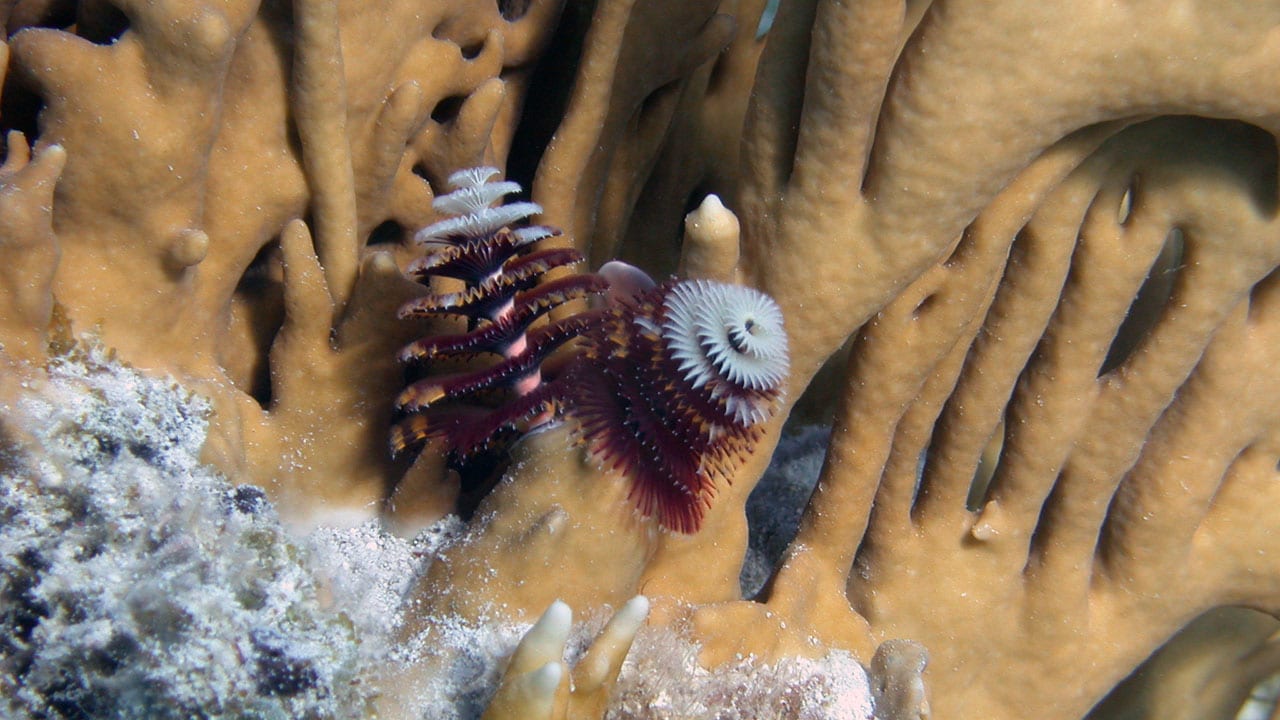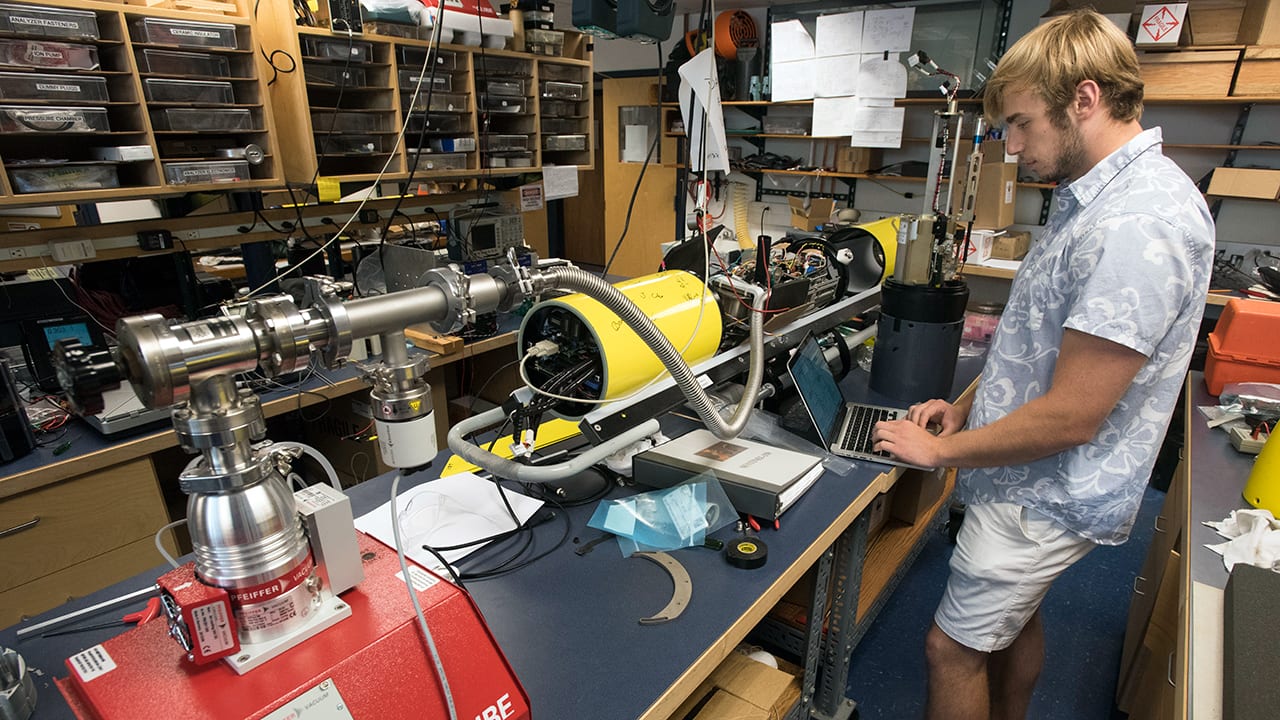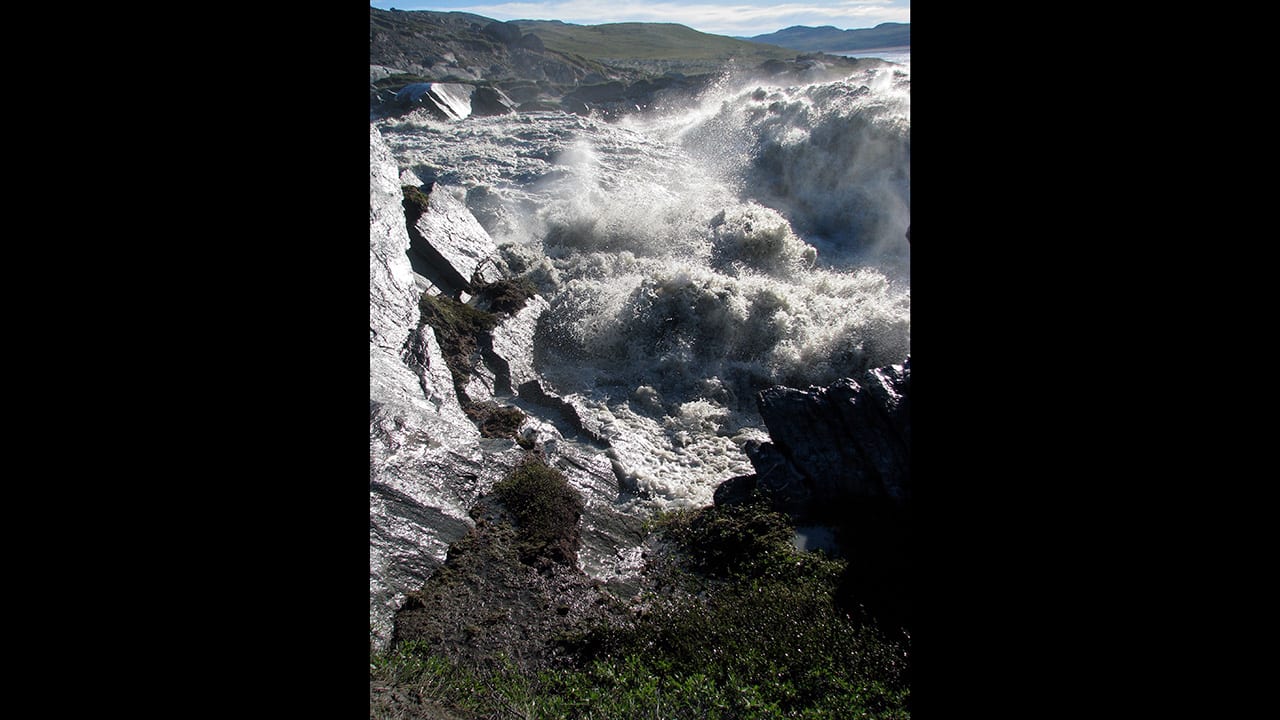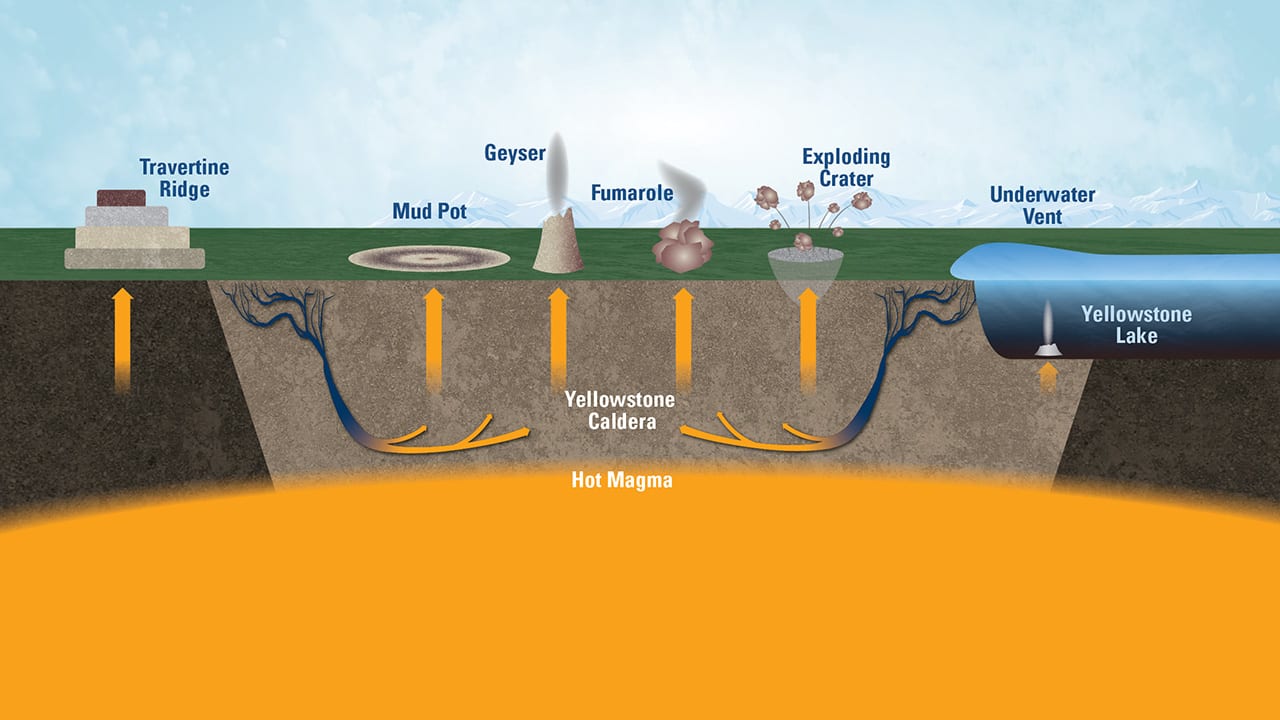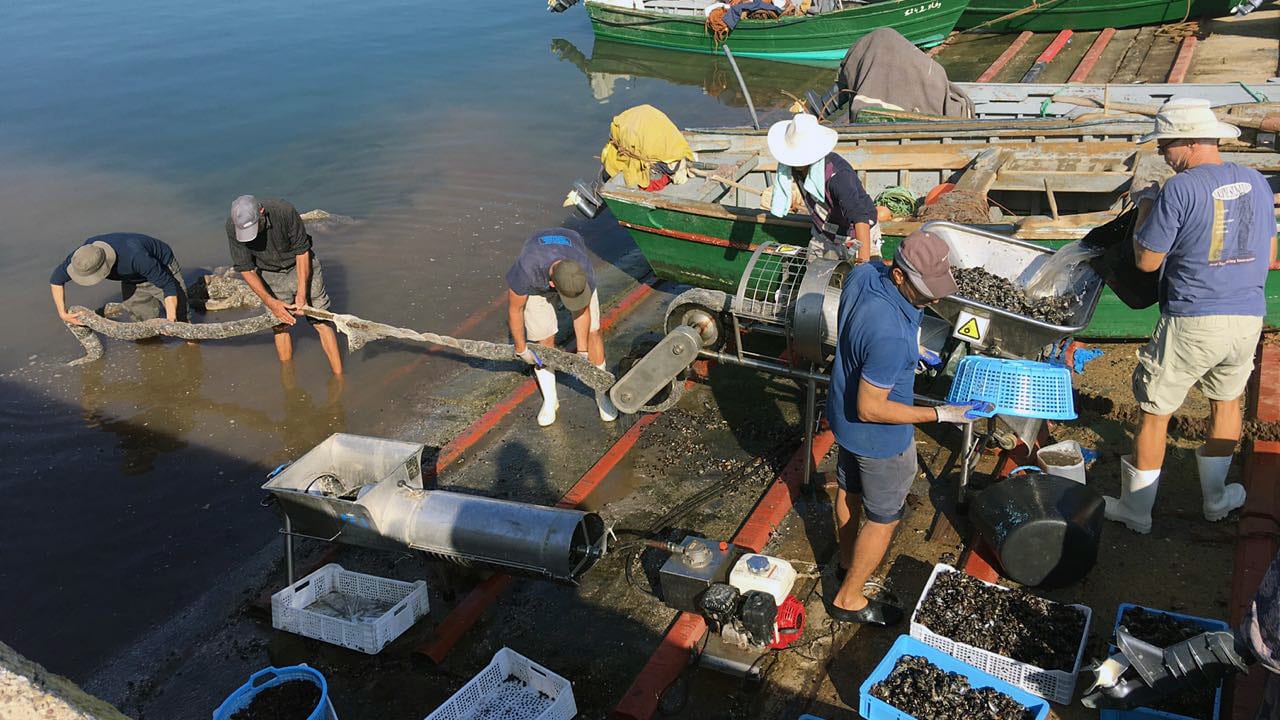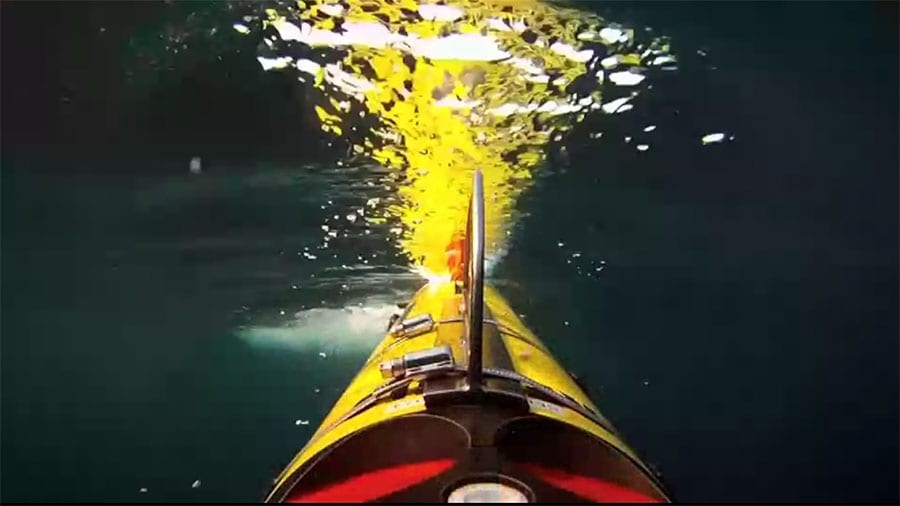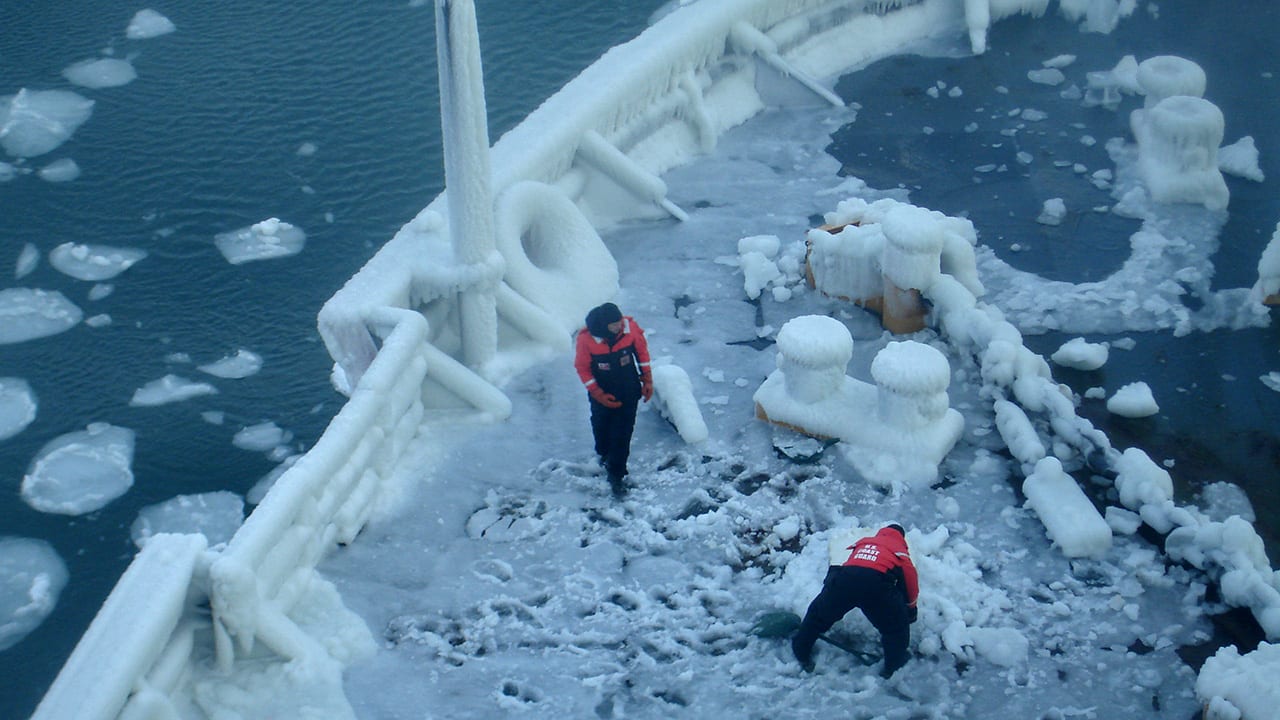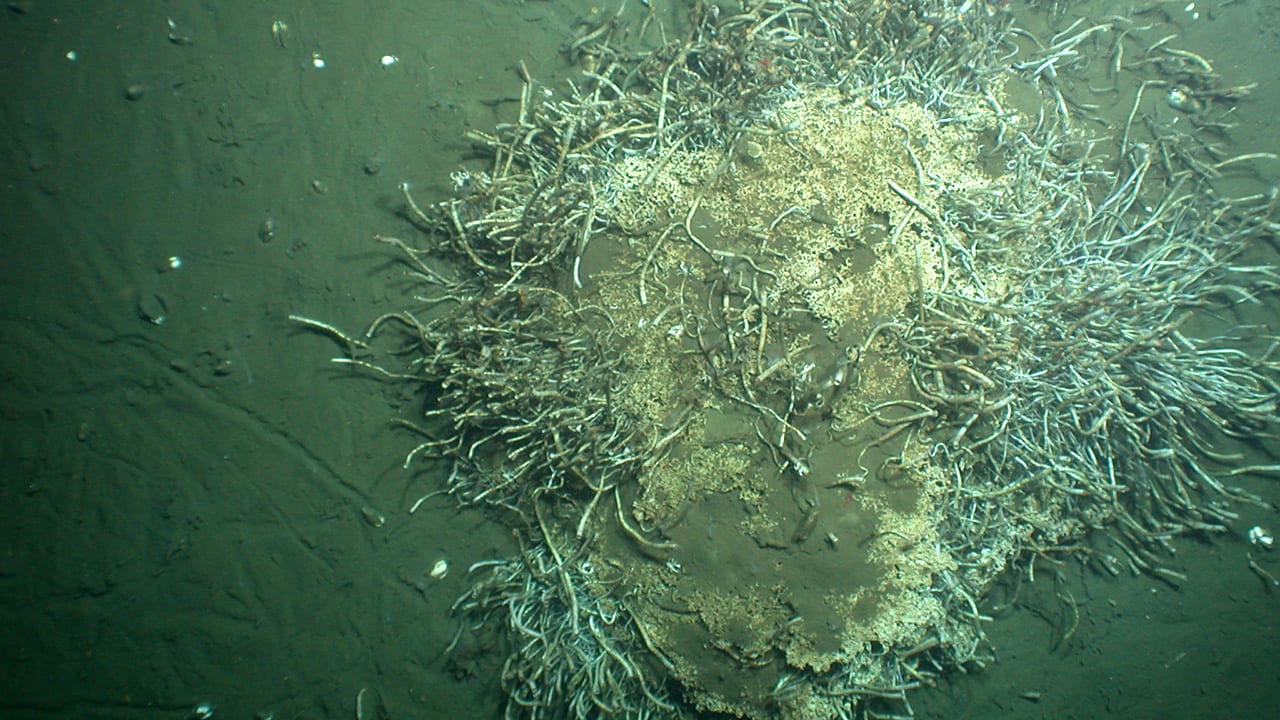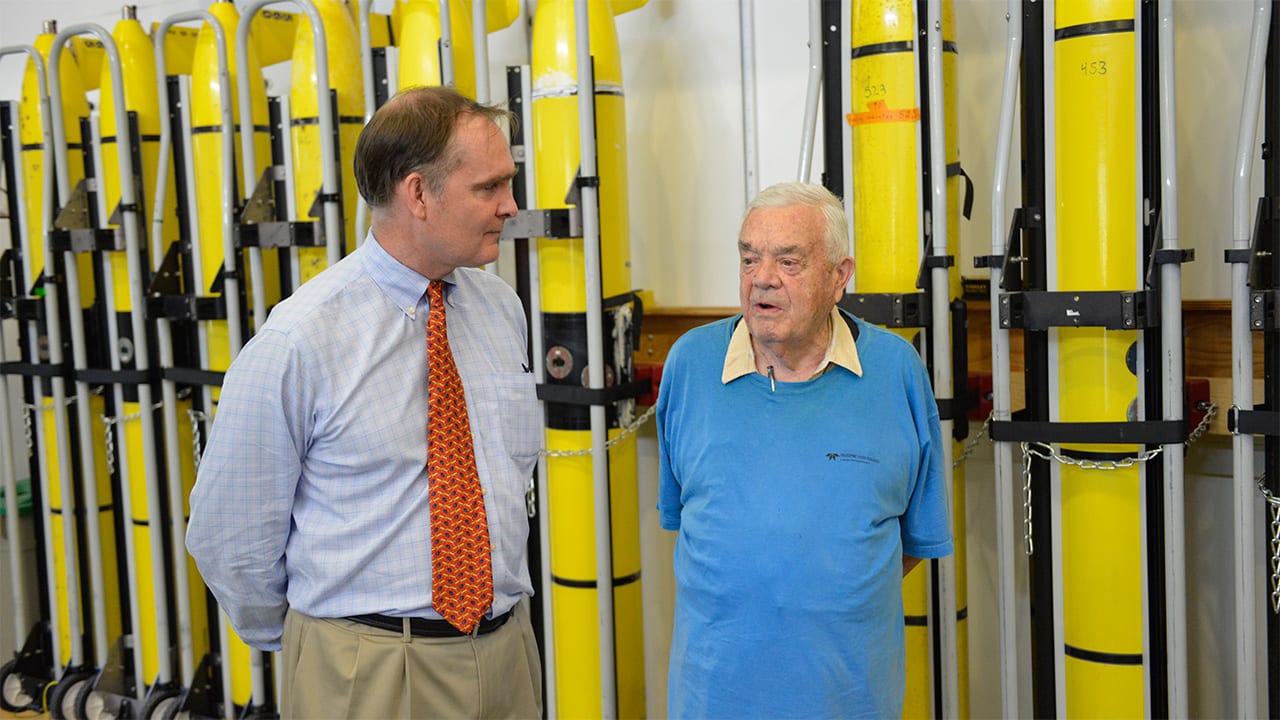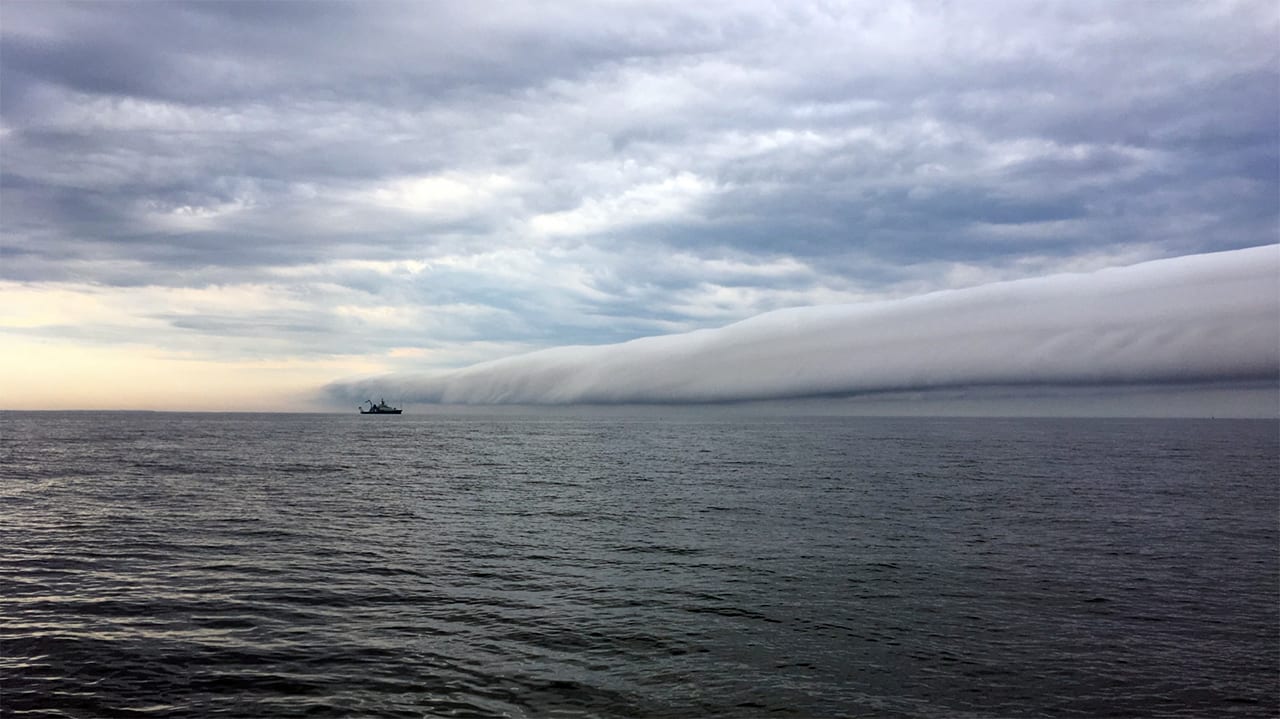Multimedia
Long Haul
Crabs and shrimp investigate a cast-steel anchor for a mooring resting 125 meters below the surface at the Pioneer Array, an ocean observatory off the Massachusetts coast operated by WHOI and…
Read MoreSnap Chatter
Snapping shrimp usually look something like tiny lobsters, with one front claw much larger than the other. They use their supersized appendage to make a characteristic snapping sound, which may…
Read MoreWorth the Wade
Woods Hole Sea Grant Extension Agent Joshua Reitsma collects shellfish samples in Cape Cod’s Barnstable Harbor as part of a study to determine how much nitrogen they incorporate into their…
Read MorePioneer Turnaround
Twice a year, the R/V Neil Armstrong makes quick trips to service the Ocean Observatories Initiative Pioneer Array. Watch a 28-hour port turnaround in a 3½-minute timelapse.
Read MoreHarvesting Fuels from the Sea
WHOI biologist Scott Lindell (left) stands within two large yellow trusses—key infrastructure for a commercial-scale seaweed farm in Nantucket Sound—with colleagues Cliff Goudey, Dom Manganelli, and Zack Moscicki from C.A. Goudey…
Read MoreChile Waters
It takes a village of scientists, engineers, and ship’s crew to conduct a research expedition like this off the coast of Chile in February 2017. The expedition’s chief scientist, Jeff…
Read MoreClues to Past Climates
Scientists long use tubes to core sediments from the seafloor—like this one pulled from Indonesia’s Makassar Strait. The sediments contain chemical and other clues that provide a historical snapshot of…
Read MoreGlider Entry
A Spray glider enters the water off the coast of Miami in September 2017, days before the arrival of Hurricane Irma. The glider flew back and forth across the current as…
Read MoreSetting Out
A view from the bow deck of the 60-foot coastal research vessel Tioga. Traveling at speeds of up to 20 knots, Tioga is a speedy, sturdy workhorse for marine research on…
Read MoreFire on the Water
Natural gas piped up from a severed wellhead in the Gulf of Mexico is flared off by a ship during the Deepwater Horizon disaster in 2010. Responders had to don…
Read MoreMerry Christmas 2017
Christmas tree worms, named for their resemblance to decorated holiday trees, are tiny, segmented worms that grow slowly and live up to four decades in a single location once they…
Read MoreSummer Sentinel
MIT undergraduate student Zach Duguid spent the summer of 2017 working in a lab run by WHOI scientist Rich Camilli. As a Summer Student Fellow, Duguid focused on an independent…
Read MoreGlacial Torrent
In 2012, 98 percent of the Greenland Ice Sheet‘s surface area melted for several days, sending torrents of meltwater down glaciers near the coast. Rising meltwaters and icebergs also tore…
Read MoreA Mooring Under Ice
See how scientists use moorings beneath ice to measure currents, ice thickness, water temperature, and salinity.
Read MoreYellowstone Hot Spot
Millions of visitors to Yellowstone National Park marvel at its colorful pools, bubbling springs, and steaming geysers and fumaroles. What they may not appreciate is that these features are just…
Read MoreAquaculture Master Class
WHOI biologist Scott Lindell (far right) and research assistant David Bailey (center) traveled to Morocco recently, where they worked with members of the National Agency for the Development of Aquaculture…
Read MoreThe Atlantic Shelfbreak
AUV REMUS explores the waters off the Carolina coast.
Read MoreClearing the Decks
Clearing ice from the decks of the U.S. Coast Guard icebreaker Healy was a regular task for ship’s crew during a 2011 cruise into the Arctic. WHOI biologist Carin Ashjian…
Read MoreSeafloor Life
This patch of clams, bacteria, and tubeworms was photographed on the ocean bottom in the Gulf of California, where two of Earth’s tectonic plates are moving apart, further separating the…
Read MoreWhatever Floats Your Research
Domitilo Nájera Navarrete stands ready to deploy a RAFOS float from the research vessel Pelican in the Gulf of Mexico. The glass-tubed floats sink to a specific depth and are…
Read MoreGlider Pioneer
Former WHOI engineer and founder of Teledyne Webb Research Doug Webb (right) chats with Center for Marine Robotics Director Jim Bellingham in front of a wall of Webb’s inventions: Slocum…
Read MoreChanges Far Away
One of the most abundant zooplankton in Antarctic waters are Euphausia superba (pictured), commonly known as Antarctic krill. In the Southern Ocean, these two-inch-long, pink crustaceans are the main food…
Read MoreGravity of the Situation
Gravity waves are undulations at the interface between two fluids of different density (fresh and salty water, or warm and cool air, for example). WHOI acoustical scientist Andone Lavery captured…
Read MoreA Royal Visit
WHOI biologist Bill Schroeder (middle) presented a rare deep-sea fish—called chimaera—to Japan’s Crown Prince Akihito during a visit to WHOI back in 1953 as WHOI Director Admiral Smith (left) looked…
Read More
